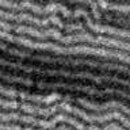
09/09/2015
The ALBA Synchrotron in the Development of Future Computers
The ALBA Synchrotron in the Development of Future Computers
A team of researchers from the Spanish National Research Council (CSIC) and the ALBA Synchrotron has developed a new method to produce and characterize cobalt ferrite nanostructures with higher quality than ever before. The study, published last month in Advanced Materials, has implications in spintronics, a technology for developing advanced computing systems.
Growth and initial characterization of the islands were performed at the low-energy electron and photoemission electron microscope of the CIRCE beamline at the ALBA Synchrotron. Cobalt and iron atoms were deposited on a substrate at high temperature, while being exposed to oxygen.
Beside, earlier this month, an article about the use of ALBA light in the study of magnetization of buried-covered films was published in Nature Communications: The technology of magnetic storage of digital data has made enormous progress in the last two decades thanks to the scientific advances in nanomagnetism, resulting in the creation of smaller devices with larger capacities and better performances.
A group of scientists from the ALBA Synchrotron, the University of Oviedo, the University of Porto and the National Microelectronics Centre (CNM-CSIC) has carried out a research that sheds light on the magnetic domains in ultrathin magnetic films. Using ALBA's X-ray transmission microscope, the researchers have been able to precisely measure the angles of magnetization of the magnetic domains and to determine how they change when they are buried – covered by other material film.
Image: image of the magnetic domains, Blanco-Roldán et al., see Reference #2
References:
Growth and initial characterization of the islands were performed at the low-energy electron and photoemission electron microscope of the CIRCE beamline at the ALBA Synchrotron. Cobalt and iron atoms were deposited on a substrate at high temperature, while being exposed to oxygen.
Beside, earlier this month, an article about the use of ALBA light in the study of magnetization of buried-covered films was published in Nature Communications: The technology of magnetic storage of digital data has made enormous progress in the last two decades thanks to the scientific advances in nanomagnetism, resulting in the creation of smaller devices with larger capacities and better performances.
A group of scientists from the ALBA Synchrotron, the University of Oviedo, the University of Porto and the National Microelectronics Centre (CNM-CSIC) has carried out a research that sheds light on the magnetic domains in ultrathin magnetic films. Using ALBA's X-ray transmission microscope, the researchers have been able to precisely measure the angles of magnetization of the magnetic domains and to determine how they change when they are buried – covered by other material film.
Image: image of the magnetic domains, Blanco-Roldán et al., see Reference #2
References:
- L. Martín-García, A. Quesada, C. Munuera, J.F. Fernández, M. García-Hernández, M. Foerster, L. Aballe, J. de la Figuera. Atomically flat ultrathin cobalt ferrite islands. Advanced Materials. DOI: 10.1002/adma.201502799
- "Nanoscale Imaging of Buried Topological Defects with Quantitative X-Ray Magnetic Microscopy" C. Blanco-Roldán, C. Quirós, A. Sorrentino, A. Hierro-Rodríguez, L.M. Álvarez-Prado, R. Valcárcel, M. Duch, N. Torras, J. Esteve, J.I.Martín, M. Vélez, J.M. Alameda, E. Pereiro, S. Ferrer Nature Communications DOI: 10.1038/NCOMMS9196
More news
14/12/2018
The Open Innovation Forum matches business challenges to academic solutions
07/12/2018
2017 BioCat report: The best of the Bioregion of Catalonia
30/11/2018
Barcelona Synchrotron Park’s Commitment to Sustainable Growth
23/11/2018
Astronomers led by IEEC reveal a cold super-Earth around Barnard’s star
16/11/2018
CRAG’s Researchers discover how to generate plants with enhanced drought resistance
08/11/2018
The Barcelona manifesto: for a city-led science and technology diplomacy









